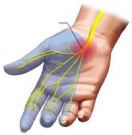
While trying much not to preempt the coming soiree with CMA, to thank this mentor for his almost “solo”mentorship to my generation of rheumatologists, this piece has to be written before being presented in that gathering.
Did you know that gold has a tablet form which is 29% gold by weight? This was circa 1980’s, during my first years of practice as a rheumatologist. Back then, the drug auranofin (Ridaura) was brought to the Philippines by GSK.
Apparently, the fascination with Au has not stopped with heavy ingots and delicate trinkets adorning the graceful of necks, waists, ankles and wrists. Gold in its liquid form in very tiny amounts was taken orally in those early days. One wonders if this could be out of that great desire to keep it within the body (as in hide it), or because it was so valued that other uses had to be invented to increase its worth even more. Conveniently, the apothecary therefore, incorporated it into concoctions and salve for illnesses.
History points to the very name that substitutes for tuberculosis- Koch’s disease, as Robert Koch, in 1890, discovered that gold compounds could slow down the growth of Mycobacterium tuberculosis. This finding paved the way for the use of gold as treatment for tuberculosis. This use of gold for treatment of disease was termed chrysotherapy.
Chrysotherapy would soon be used in cancer therapy since gold is known to concentrate in areas of high vascularity. This was followed closely by its successful use for rheumatoid arthritis (RA). Its use for RA as a disease modifying anti-rheumatic drug (DMARD), was promising but short-lived. By 1985, the anti-cancer agent methotrexate had become the first line DMARD for RA, till the present. And many more other ways to treat RA have flourished.
Not withstanding, the promise of gold in the realm of medicine continues to be explored, its fascination much like how the eyes would rivet toward its golden glow as light hits its surface. Currently, its use in the delivery of drugs where they are needed in the body is being investigated. Soon, if not already out, its use in HIV therapy may welcome it back to mainstream medicine as the drug to reckon.
One, it seems can never have enough of gold and so the wait continues…








 Awake in the dark…
Awake in the dark…